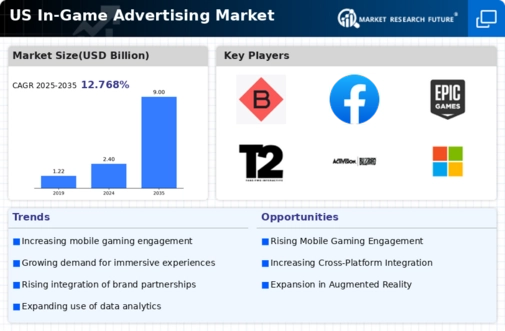The US In-Game Advertising Market has rapidly evolved as a critical area for brands seeking to engage consumers through immersive experiences. As gaming continues to grow in popularity, advertisers are increasingly looking to integrate their messages within games rather than through traditional ad placements. This market is characterized by competition between various companies that specialize in delivering advertisements in innovative and engaging ways. A wide range of strategies, including programmatic advertising and influencer collaborations, have emerged to meet the demands of gamers and brands alike.
The dynamic landscape is shaped by shifting consumer preferences and technological advancements that have enabled more interactive and personalized advertising experiences.Blaize has established itself as a prominent player in the US In-Game Advertising Market by leveraging its advanced visual computing technology to deliver targeted ad solutions. Known for its robust platform, Blaize focuses on optimizing in-game ad placements, thereby enhancing user engagement while maximizing brand visibility. The company's strength lies in its ability to seamlessly integrate advertisements into gameplay, ensuring that campaigns resonate with players without disrupting their experience.
Additionally, Blaize's commitment to data analytics allows advertisers to track performance metrics closely, enabling continuous improvements in campaign effectiveness. This adaptability and focus on user experience make Blaize a strong competitor in the ever-evolving landscape of in-game advertising.Facebook is a significant influencer in the US In-Game Advertising Market, offering a vast ecosystem for brand engagement through its gaming platforms and social media integration. The company's key products and services include Facebook Gaming and the Meta platform, which support diverse gaming experiences, providing advertisers far-reaching opportunities to connect with audiences.
Facebook's extensive data capabilities enable brands to deliver highly targeted ads based on user preferences and behaviors, ensuring precision in their marketing efforts. The company has also pursued strategic mergers and acquisitions to strengthen its position in the gaming sector, allowing it to enhance its advertising capabilities further. By focusing on community building and user engagement, Facebook effectively leverages its vast user base to provide advertisers with significant reach and impact within the in-game advertising space.























Leave a Comment